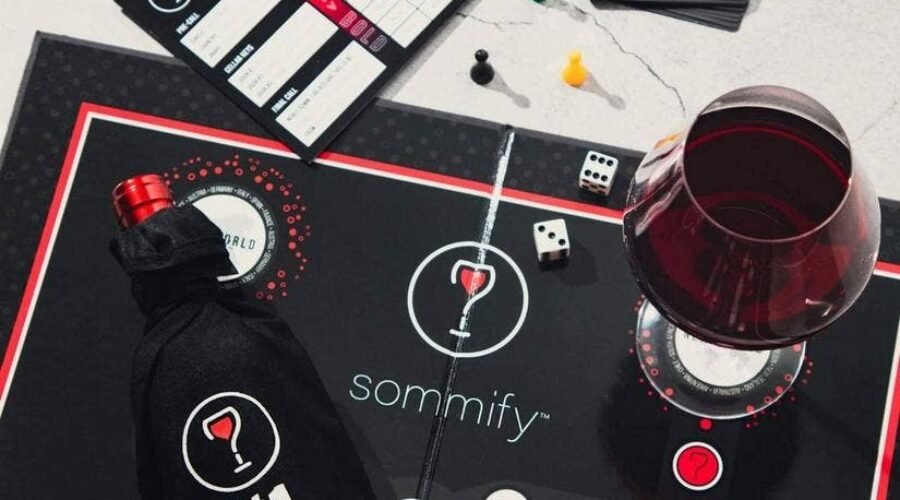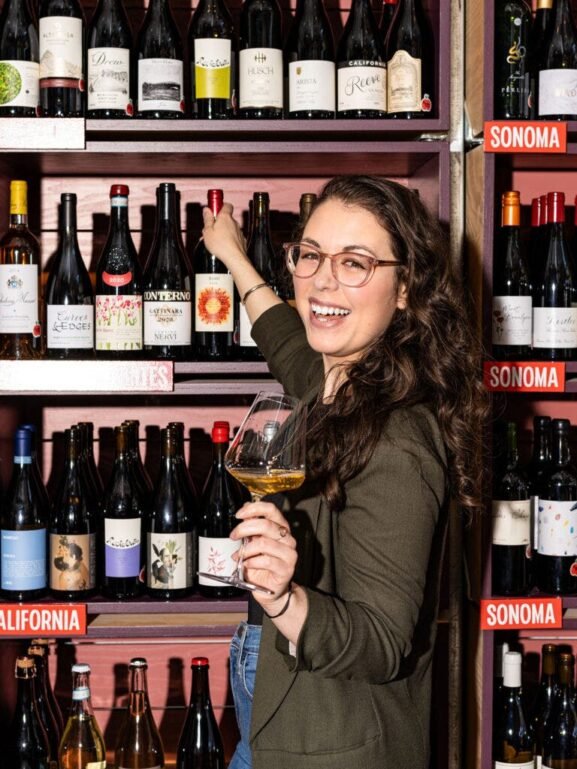Taste Like a Pro: How to Prevent Palate Blowout During Wine Tastings
The idea of hopping from vineyard to vineyard to sip wines may sound appealing for the average consumer in search of the perfect bottle (and, frankly, buzz), but even for sommeliers, winemakers and industry professionals, there is such a thing as too much vino.
Palate blowout, the phenomenon of losing your sense of taste after overconsumption, can cause the mouth to not only tire, but also render ineffective. After all, a numb tongue is a tongue that can’t pick up on the flavor nuances of different vintages and varietals, at which point you’re better off downing shots of cheap vodka.
To combat this common tasting room faux pas, we chatted with three wine experts for their top prevention tips.
1. Hydration, Hydration, Hydration
While individual body chemistry will dictate how quickly a palate weakens or a mouth dries, a general rule of thumb is to wet your whistle, quite literally, by going into a tasting hydrated.
“Whenever I attend a large tasting, I am hyper-aware of making sure that I’ve had enough water,“ says Liz Martinez, general manager and sommelier of KILN at the Heron Hotel in Alexandria, Virginia.
Rachel Thralls, sommelier and wine education consultant, echoes this sentiment, reiterating that it’s equally important to have water on standby for frequent swigs throughout the tasting itself.
“Alcohol is obviously drying, so it’s important to take sips of water in between each glass or whenever you need a refresh or cleanse,” she suggests.
2. Avoid Outside Scents
If you can’t smell, you can’t taste. In fact, nearly 80% of our taste may be entirely dependent upon the nose and its complex olfactory system.
“Because of this connection, it’s best to not wear perfumes or colognes during wine tastings, as these can overpower and distract from the wonderful aromas of wines, causing the palate to work overtime,” advises Thralls.
Dr. Rachel Allison, wine chemist and postdoctoral scholar at Penn State University’s Department of Food Science, adds that strong odors can also take away from a simple, yet effective wine-tasting practice: sniffing yourself in between sips to recalibrate the senses.
“It’s common [for wine tasters] to smell their skin at the wrist or elbow in between wines since we tend to smell neutral to ourselves,” she reveals, remarking that it can also help to pick up on the more subtle tasting notes.
3. Go from Light to Heavy
The bolder the wine, the more intense it feels on the tongue. Naturally, it makes the most sense to start with lighter white wines and work your way to bigger, tannin-heavy reds.
“You will absolutely blow out your palate if you start with big red wine,” warns Martinez. “Save those for last and get started with crisp white wines.”
“Remember, this, in many ways, is like a marathon,” she adds, noting that consistent pacing and proper planning are, perhaps, the biggest keys to palate fatigue prevention.
4. Rely on Bubbles
Sparkling wines certainly make for a textural departure from a portfolio of still whites, reds, rosés and oranges, but they’re also great for giving your palate a break.
“Drink the sparkling wines in between some of the other still wines to not only to break things up, but also strategically do a once-in-a-while palate refresh and reset throughout,” recommends Martinez. “The bubbles can really help ‘scrub’ the palate, giving you sort of a clean slate to taste with.”
Effervescence can also come in the form of sparkling water, light soda or even beer, with the latter two serving as ideal distractions for those who may find themselves tempted to chug entire flutes of bubbles.
let adType_67b7a9ed33a2e = “leaderboard”;
// Create the element
let script_67b7a9ed33a2e = document.createElement(“script”);
script_67b7a9ed33a2e.innerHTML = `
window.googletag = window.googletag || {cmd: []};
googletag.cmd.push(function() {
var mapping;
// Size mapping for leaderboard ads
var lbmapping = googletag.sizeMapping()
.addSize([1024, 0], [[970, 250], [970, 90], [1, 1], [728, 90]])
.addSize([728, 0], [[728, 90], [1, 1]])
.addSize([320, 0], [[1, 1], [300, 50], [300, 100], [320, 50], [320, 100]])
.addSize([0, 0], [[1, 1], [320, 50]])
.build();
// Size mapping for med rectengle ads
var medrecmapping = googletag.sizeMapping()
.addSize([1024, 0], [[300, 600],[300, 250]])
.addSize([728, 0], [300, 250])
.addSize([320, 0], [[1, 1],[300, 250]])
.addSize([0, 0], [[1, 1], [300, 250]])
.build()
//var lbSlots = [[[320, 100], [728, 90], [300, 100], [1, 1], [300, 50], [970, 250], [320, 50], [970, 90]]];
//var medrecSlots = [[300, 600], [1, 1], [300, 250]];
mapping = adType_67b7a9ed33a2e == ‘leaderboard’ ? lbmapping : medrecmapping;
googletag.defineSlot(‘/39808611/article_page/article_leaderboard_1’, [],
‘div-gpt-ad-67b7a9ed33a2e’).addService(googletag.pubads()).defineSizeMapping(mapping);
googletag.pubads().enableSingleRequest();
googletag.pubads().collapseEmptyDivs(); //maybe optional
googletag.pubads().refresh(); //maybe optional
googletag.enableServices();
});
`;
//checking to see if script is inserted in the header successfully
if (document.head.appendChild(script_67b7a9ed33a2e)) {
//variable holding the rendering body
document.getElementById(“gptBodySection-67b7a9ed33a2e”).innerHTML = `
googletag.cmd.push(function() { googletag.display(div-gpt-ad-67b7a9ed33a2e); });
`;
}
5. Consume Neutral Foods
Palate cleansers come in many forms, though a tried-and-true technique is to pause and take bites of neutral foods in between sips. Eating, like drinking carbonated beverages, activates salivary glands and prevents the mouth from tuckering out.
“This is usually [in the form of] a piece of bread or cracker,” says Martinez. “A cube of mild cheese is another direction that you should take. The fat can help break up the tannin in the wine.”
“Even a slice of apple can really go a long way,” she adds. “It’s fresh and juicy and can really perk up the palate.”
6. Swig and Spit
If you take your tastings as seriously, do as the pros do and spit.
“For the everyday person, it is important to remember to spit the wine during your winery visits,” stresses Thralls. “By doing so, you will be more likely to distinguish which wines you like best to then enjoy a glass of that particular wine. Drinking too much wine during the tasting can dull your senses.”
Allison takes her approach to wine tasting a step further by treating tastings as “analytical chemistry,” she says. “Sipping water and eating plain crackers are common tools to cleanse the palate, but it is also important to be consistent in the method of palate cleansing to effectively reestablish your own personal baseline.”
But there are also other ways to do this, she adds: “Some people will rinse the mouth with a neutral wine, much like pouring a small rinse during a progressive tasting.”
This act will help to yield “reliable control samples” so that the perception of taste isn’t skewed by the introduction of outside ingredients.
let adType_67b7a9ed341bf = “leaderboard”;
// Create the element
let script_67b7a9ed341bf = document.createElement(“script”);
script_67b7a9ed341bf.innerHTML = `
window.googletag = window.googletag || {cmd: []};
googletag.cmd.push(function() {
var mapping;
// Size mapping for leaderboard ads
var lbmapping = googletag.sizeMapping()
.addSize([1024, 0], [[970, 250], [970, 90], [1, 1], [728, 90]])
.addSize([728, 0], [[728, 90], [1, 1]])
.addSize([320, 0], [[1, 1], [300, 50], [300, 100], [320, 50], [320, 100]])
.addSize([0, 0], [[1, 1], [320, 50]])
.build();
// Size mapping for med rectengle ads
var medrecmapping = googletag.sizeMapping()
.addSize([1024, 0], [[300, 600],[300, 250]])
.addSize([728, 0], [300, 250])
.addSize([320, 0], [[1, 1],[300, 250]])
.addSize([0, 0], [[1, 1], [300, 250]])
.build()
//var lbSlots = [[[320, 100], [728, 90], [300, 100], [1, 1], [300, 50], [970, 250], [320, 50], [970, 90]]];
//var medrecSlots = [[300, 600], [1, 1], [300, 250]];
mapping = adType_67b7a9ed341bf == ‘leaderboard’ ? lbmapping : medrecmapping;
googletag.defineSlot(‘/39808611/article_page/article_leaderboard_2’, [],
‘div-gpt-ad-67b7a9ed341bf’).addService(googletag.pubads()).defineSizeMapping(mapping);
googletag.pubads().enableSingleRequest();
googletag.pubads().collapseEmptyDivs(); //maybe optional
googletag.pubads().refresh(); //maybe optional
googletag.enableServices();
});
`;
//checking to see if script is inserted in the header successfully
if (document.head.appendChild(script_67b7a9ed341bf)) {
//variable holding the rendering body
document.getElementById(“gptBodySection-67b7a9ed341bf”).innerHTML = `
googletag.cmd.push(function() { googletag.display(div-gpt-ad-67b7a9ed341bf); });
`;
}
7. Don’t Overdo it
It’s a-okay to simply not partake in tastings beyond a single flight of a few options. Sommeliers and winemakers are trained professionals who have developed the skills and talent to sample larger amounts. Everyday people are, by no means, expected to match their level of expertise.
Recognize your favorite wines in advance and utilize resources (ahem, like Wine Enthusiast) to research similar styles and producers. This can be a great launching point to narrow down the wineries you’d like to visit during trips to popular wine regions such as California’s Napa Valley, Burgundy in France and Mendoza, Argentina.
“Tools like a tasting grid have [also] helped me focus my analysis,” says Allison, who uses the standard placemat to identify and jot down characteristics such as structure, visual identifiers and how glasses come across on the nose.
Keeping in mind these factors during a tasting can help guide the palate towards certain flavors so that things don’t start tasting the same.
“Like most things, regular practice should increase your stamina,” she adds.
Needless to say, if you often find yourself seated in a tasting room, expanding your endurance certainly will come in handy. Integrate the aforementioned tips into your sipping routine and you’ll be well on your way to enjoying wines without the ever-so-dreaded cottonmouth.
More Tasting Coverage
- Game night for wine lovers: how to host a blind tasting party.
- Lush or lean? Wine pros on what their favorite tasting terms really mean.
- The benefits of learning with a wine aroma kit.
- How to describe wine using fruit clusters.
- How Ann Noble and the Wine Aroma Wheel revolutionized the industry.
In the Shop
Sommify Bundle Blind Tasting Wine Game with Tasting Bags
In Stock | $60.00
The post Taste Like a Pro: How to Prevent Palate Blowout During Wine Tastings appeared first on Wine Enthusiast.


